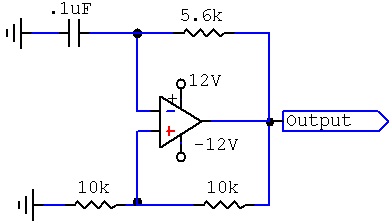A relaxation oscillator is a circuit that repeatedly alternates between two states at with a period that depends on the charging of a capacitor. The capacitor voltage may change exponentially when charged or discharged through a resistor from a constant voltage, or linearly when charged or discharged through a constant current source. With exponential charging, the timing is expressed in terms of time constants RC.
 |
 |







